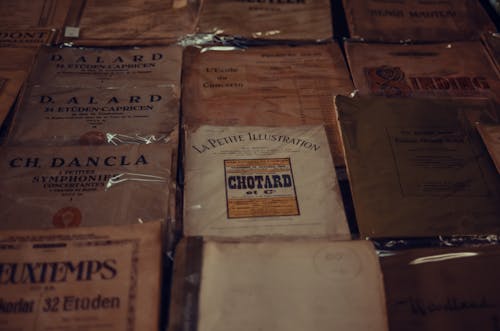Why Are Cigarettes Cheaper: Unveiling the Mystery Behind Affordable Tobacco Products

Image Source: Pexels

Introduction
The affordability of cigarettes has long been a topic of discussion and concern. Many smokers and non-smokers alike wonder why certain brands of cigarettes are significantly cheaper than others. In this article, we will delve into the factors that contribute to the lower prices of some cigarettes and explore the implications of these affordable tobacco products. Through a comprehensive analysis of various sources, including academic articles, industry reports, and government publications, we aim to shed light on the mystery behind cheaper cigarettes.
Understanding Cheap Whites
Cheap Whites, also known as Illicit Whites, are cigarettes that are manufactured by legitimate business enterprises but are often sold without all applicable duties paid, typically outside the jurisdiction where they are produced. While the terms “Illicit Whites” and “Cheap Whites” are used interchangeably, it is important to note that not all Cheap Whites are illegal. Some of these brands are sold legally, which differentiates them from purely illicit cigarettes.
The Rise of Cheap Whites
Over the past decade, Cheap Whites have gained prominence in the illicit tobacco trade. These cigarettes have become an emerging source of concern, attracting the attention of both transnational tobacco companies (TTCs) and independent researchers. Cheap Whites offer advantages over counterfeited cigarettes, as they are not subject to legal action regarding trademarks. This lower risk translates into lower costs for manufacturers, allowing them to invest in higher quality materials and machinery without the fear of confiscation.
Defining Cheap Whites
The term “Cheap Whites” was first introduced in the World Customs Organization’s 2009 report on illegal trade. Since then, various government institutions, international organizations, and tobacco companies have developed their own definitions of Cheap Whites. These definitions have evolved over time, reflecting the changing landscape of the illicit tobacco market.
Market Presence and Brand Proliferation
Research indicates that there are numerous Cheap White brands and manufacturers operating globally. According to available data, there are at least 82 Cheap White brands and 53 manufacturers with multiple production facilities. Interestingly, one-third of these manufacturers are located in the free zones of Russia, Cyprus, and the United Arab Emirates (UAE). These free zones, known for their weak regulations, facilitate the production and distribution of Cheap Whites.
Trademark Ownership and Geographical Distribution
Cheap White brands are characterized by complex trademark ownership and geographical distribution. There are 81 different trademark owners located in 36 countries, with China, the UK, and the UAE being home to a significant number of trademark owners. It is worth noting that trademark ownership and manufacturing facilities do not necessarily correspond to the same entity. A brand can have multiple manufacturers and trademark owners, further complicating the landscape of Cheap Whites.
Compliance with Legal Requirements
One of the key issues surrounding Cheap Whites is their compliance with tax stamp and warning label regulations. Data from the Tobacco Pack Surveillance System (TPackSS) reveals that a significant number of Cheap White brands do not meet these legal requirements in countries where they are sold. Two-thirds of the Cheap White brands in the TPackSS database lacked the correct health warning or tax stamp in at least one country of purchase. This non-compliance undermines tobacco tax policies and raises concerns regarding public health.
Price Comparison: Cheap Whites vs. Other Brands
It is commonly believed that Cheap Whites are significantly cheaper than other brands. However, the price gap is often not as large as anecdotal reports suggest. The TPackSS data allows for a comparison of prices between Cheap Whites and non-Cheap Whites in different countries. While Cheap Whites were generally less expensive, the price differences were not as substantial as expected. In fact, the cheapest Cheap Whites in the TPackSS countries were still more expensive than the least expensive non-Cheap White brands that complied with all legal requirements.
The Implications of Cheap Whites
The presence of untaxed or illegally sold Cheap Whites poses several implications. Firstly, it undermines tobacco tax policies, as governments lose out on potential tax revenue. This loss of revenue can have adverse effects on public health initiatives and other essential services funded by tobacco taxes. Secondly, the availability of legal cheap cigarettes, including some Cheap Whites, raises concerns for public health. Affordable cigarettes are more accessible to individuals, particularly those on lower incomes, potentially exacerbating smoking rates and related health issues.
Addressing the Issue of Cheap Whites
The issue of Cheap Whites cannot be addressed in isolation. While these cigarettes may pose specific challenges, tackling illicit trade in all tobacco products is crucial. The World Health Organization (WHO) has developed the Protocol to Eliminate Illicit Trade in Tobacco Products, which aims to control the supply chain of tobacco products effectively. Ratifying or acceding to this protocol can be a significant step towards combating the illicit trade of all tobacco products, including Cheap Whites.
Conclusion
The affordability of cigarettes, particularly Cheap Whites, is a complex issue with far-reaching implications. While some Cheap Whites are sold legally, many do not comply with legal requirements in the countries where they are sold. The presence of untaxed or illegally sold Cheap Whites undermines tobacco tax policies and raises concerns for public health. Addressing the issue of Cheap Whites requires a comprehensive approach that encompasses all tobacco products and emphasizes the importance of international cooperation. By understanding the factors contributing to the lower prices of certain cigarettes, we can work towards creating a healthier and more regulated tobacco market.
References:
- Ross, H., Vellios, N., Smith, K. C., Ferguson, J., & Cohen, J. (2015). A closer look at ‘Cheap White’ cigarettes. Tobacco control, 24(e2), e136-e142.
- World Customs Organization. Customs and Tobacco Report 2007 (2008).
- European Commission. Action plan to fight against smuggling of cigarettes and alcohol along the EU Eastern Border. Commission staff working document accompanying the communication on the Commission anti-fraud strategy, 24 June 2011.
